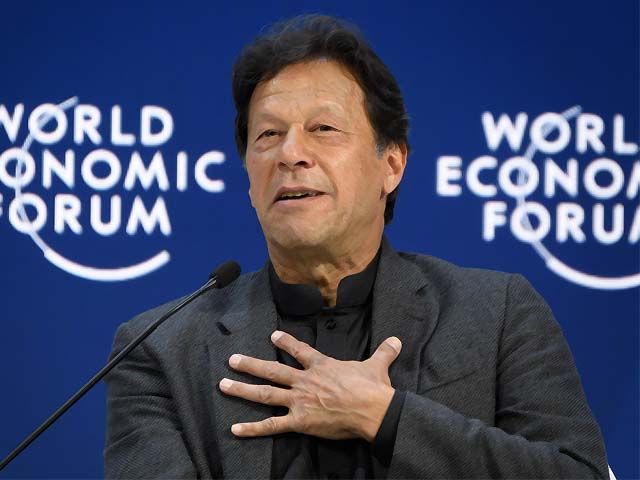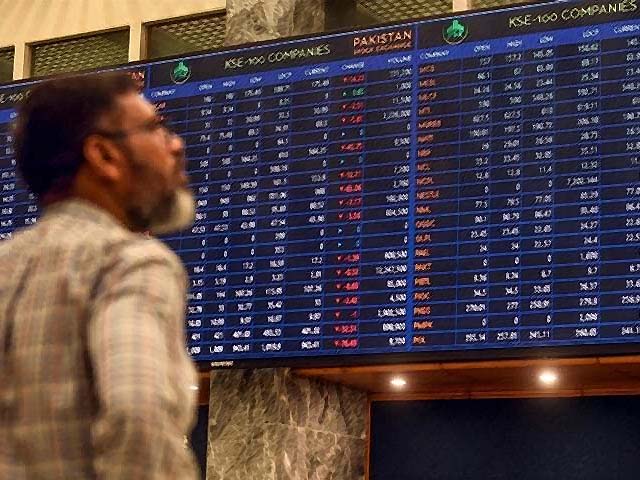
The Karachi stock market is not a casino, Pakistan - stop gambling!
Behavioural inefficiencies should be managed and investors should perceive themselves as investors instead of gamblers
“Becho, becho”
(Sell, sell)
“Lay maal”
(Take the stock)
“Karachi stock market mein shadeed mandee (decline)”
“Shares key karobaar mein hazaar point ki kami”
(A 1,000 point drop in shares)
Such are the headlines across the media nowadays which happens to be the topic of discussion among many. Meanwhile, the broader Index, KSE 100, declined by an eye-popping 17.5% from 35,055 points to 28,927 points in less than two months. For many, this is another bad experience, but for some, it has turned out to be an exciting opportunity.
Like any doctor who sees a sick patient, we must first assess the rational reasons behind the steep fall. Sometimes, the doctor correctly identifies a temporary viral attack and gives a combination of ‘comfort plus painkillers’ to the patient. In other cases, more serious actions are required. Similarly, with the stock market, we should begin by evaluating the reasons of the fall as judiciously and prudently as possible:
Foreign selling
The foreign shareholders had a net selling of $96 million during the period of decline. Many attribute the amount to have stemmed from the following reasons:
1. Everest Capital’s decision to close their funds after defaulting on a global currency trade.
2. The stock market shooting up relentlessly after hitting lows at the time of the Pakistan Tehreek-e-Insaf (PTI) versus Nawaz Sharif fiasco in late August 2014 and thus, foreigners wanted to capitalise on their gains.
3. The withdrawal of exemption on withholding tax on capital gain for foreigners which may dilute their returns and/or reveal their identity (unwillingly) to the tax payer.
Local funds selling
As the market started inching upwards non-stop, from September 2014 to February 2015, many of the retails felt ‘left-out’ and wanted to participate in the rising market. To their (dis)comfort, a few of the products launched by the Asset Management Companies (AMC) entailed a claimed principal protection. In simple words, they assured money will not be lost, but gains from the stock market’s ‘rise’ will be offered.
The underlying methodology usually adopted is called ‘Constant Proportion Portfolio Insurance (CPPI)’, which essentially buys stocks when they are going up and sells when the stocks are going down. Connecting the trick with foreign selling, these funds might have compounded the selling in a falling market as their principal protection cushion erodes and funds sell in panic, mechanically to safeguard the capital.
Margin calls
Individual investors usually take leveraged exposure in the market. They may invest Rs200 (Rs100 equity + Rs100 debt) and if the portfolio declines by 15%, the equity declines by 30%. Such magnifying losses create panic and invite ‘margin calls’ from the brokers which ask them to deposit more money to maintain the exposure or liquidate with losses.
Hence, in a rapidly falling market, some weak holders are filtered out and the exchange of hands takes place to further augment the structural strength of the market.
But the above factors do not signal that the party is over and it’s time to pack up. Disinvesting is a decision that is far more difficult than investing and before any exit, the investors must assess the following:
Is the decline a permanent or temporary feature?
As we said earlier, it was a temporary decline led by a “collision of sellers”.
Am I finding better investment alternatives?
Banks and National Savings Certificates offer even lower single digit returns net of taxes. Gold is likely to further remain in the bearish trend while real estate requires a handsome chunk of capital outflow with ensuing legal and tenancy issues.
Has the economy improved overall lately?
Inflation level has bottomed, discount rate is historically low, Foreign Exchange (FX) reserves are reaching an all-time high, the costs of electricity and oil have come down drastically, the political and law and order situation has improved considerably, the currency is stable, gas is being injected into the system, remittances are at an all-time high and after a very long time, our credit rating outlook was assigned a “positive” note by Moody’s.
In the last five to six years, the economy has never been on a stronger platform as it is now. In such circumstances, the risk appetite should increase and one should invest in established and/or new businesses.
Has the index reached the maturity valuations?
Pakistan is well poised to stage a remarkable turnaround if the low oil prices and its trickle down benefits are aptly utilised. The index is still considerably cheap and offers higher returns than many other regional players. Moreover, the country has come further into the limelight as one of the few frontier markets which have enormous growth potential, as mentioned by Morgan Stanley’s chief investment strategist,
“Pakistan’s rise is just a matter of time.”
Unfortunately, the retails who join the party late, at the peak, expect the jubilation to continue at the same pace. And when it does not, as it usually does not, they shout, cry, cut losses, leave the table and re-join the party at higher levels when they see someone else (who invested at lower levels) making money.
Such behavioural inefficiencies should be managed and investors should perceive themselves as investors instead of gamblers. If a bystander witnesses heavy unexpected showers, he raises his elbow and walks briskly to refuge until the dust settles.
If a person can adapt to ‘withstanding’ the turbulent weather, the investors should also ‘withstand the ‘volatility’ and stay put.




COMMENTS (30)
Comments are moderated and generally will be posted if they are on-topic and not abusive.
For more information, please see our Comments FAQ